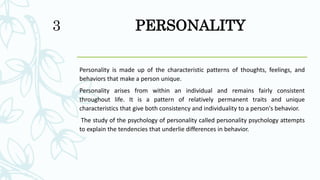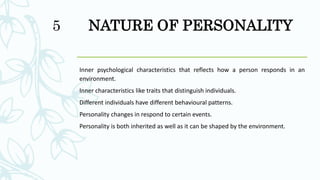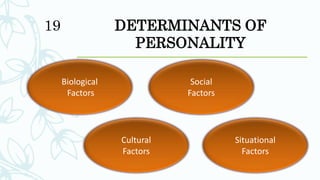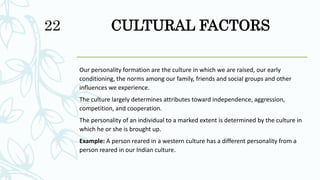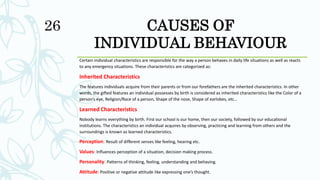Personality encompasses the characteristic patterns of thoughts, feelings, and behaviors that define an individual and remain consistent over time. It is influenced by both genetic and environmental factors, affecting how individuals respond to various situations. Understanding personality involves various theories and models, including the Big Five model, Myers-Briggs Type Indicator, and Freud's psychoanalytic theory.


